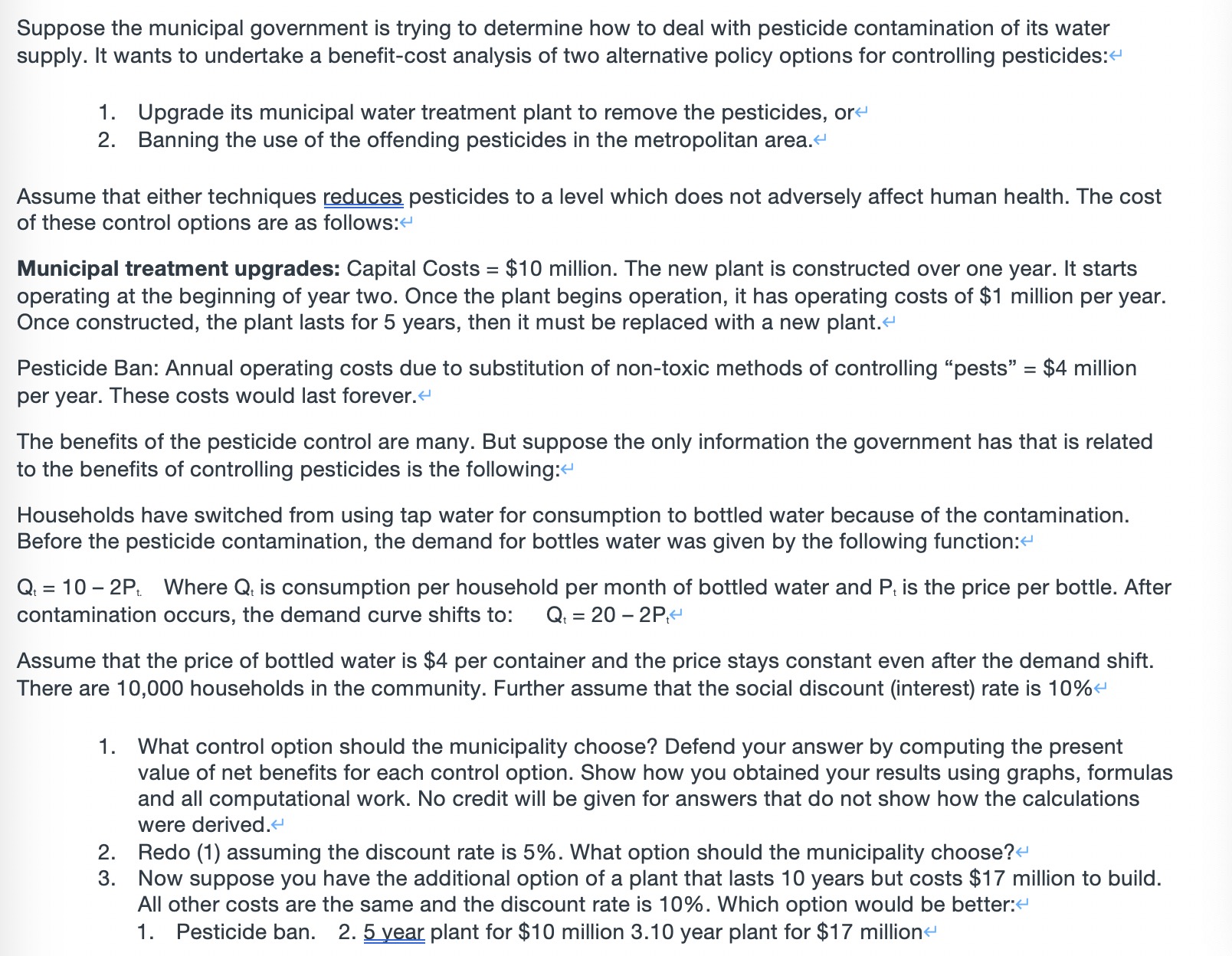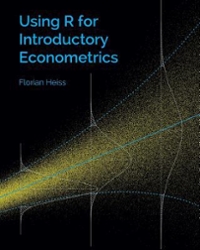this is my question thank you
Suppose the municipal government is trying to determine how to deal with pesticide contamination of its water supply. It wants to undertake a benefit-cost analysis of two alternative policy options for controlling pesticidesw' 1. Upgrade its municipal water treatment plant to remove the pesticides, ore 2. Banning the use of the offending pesticides in the metropolitan areas Assume that either techniques Leduces pesticides to a level which does not adversely affect human health. The cost of these control options are as follows:@ Municipal treatment upgrades: Capital Costs = $10 million. The new plant is constructed over one year. It starts operating at the beginning of year two. Once the plant begins operation, it has operating costs of $1 million per year. Once constructed, the plant lasts for 5 years, then it must be replaced with a new plant.\" Pesticide Ban: Annual operating costs due to substitution of non-toxic methods of controlling \"pests" = $4 million per year. These costs would last forever The benefits of the pesticide control are many. But suppose the only information the government has that is related to the benefits of controlling pesticides is the followingsl Households have switched from using tap water for consumption to bottled water because of the contamination. Before the pesticide contamination, the demand for bottles water was given by the following functionze' Q. = 10 2P. Where 0. is consumption per household per month of bottled water and Pt is the price per bottle. After contamination occurs, the demand curve shifts to: Q. = 20 2P,J Assume that the price of bottled water is $4 per container and the price stays constant even after the demand shift. There are 10,000 households in the community. Further assume that the social discount (interest) rate is 10%e 1. What control option should the municipality choose? Defend your answer by computing the present value of net benefits for each control option. Show how you obtained your results using graphs, formulas and all computational work. No credit will be given for answers that do not show how the calculations were derived.







